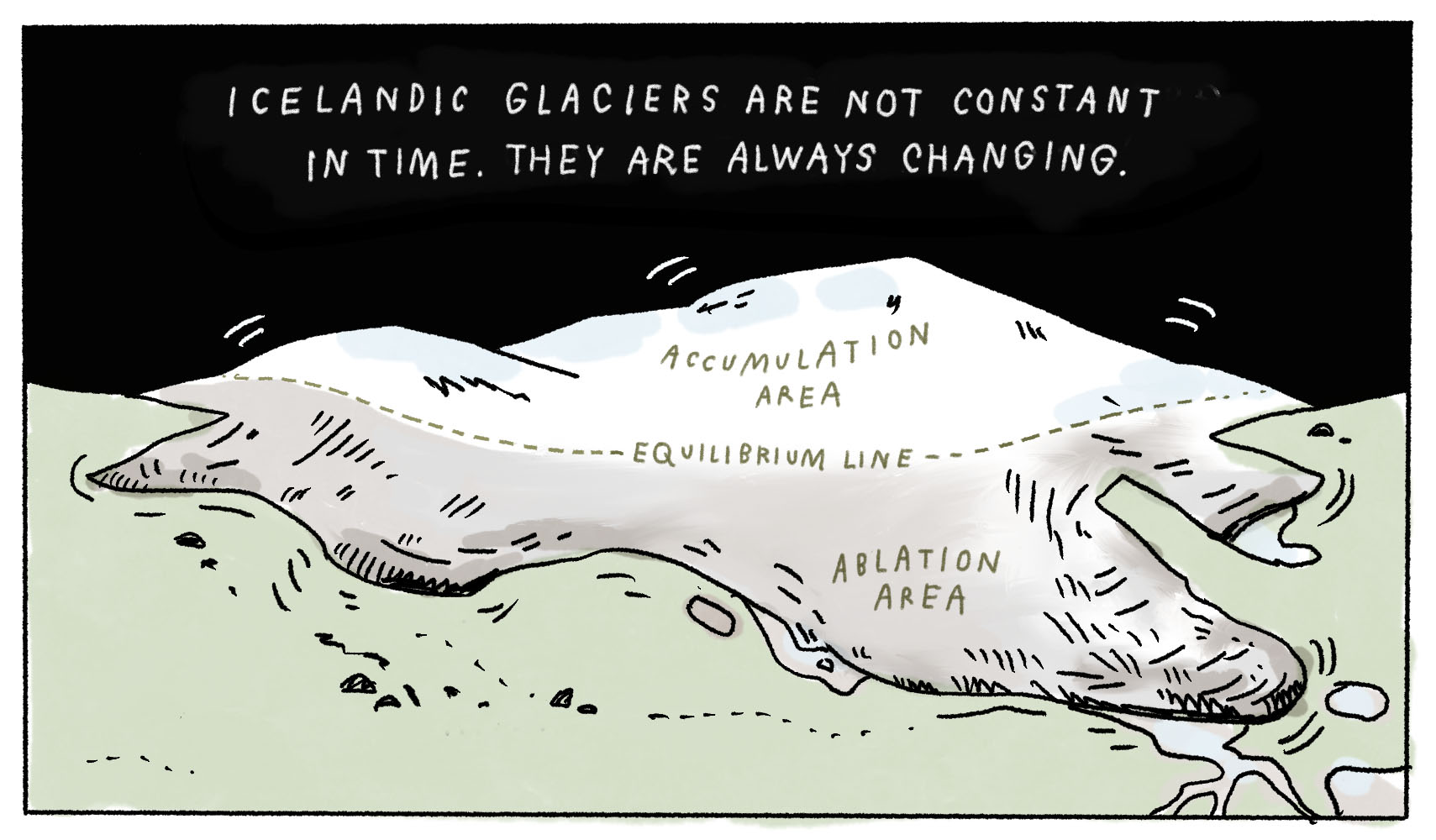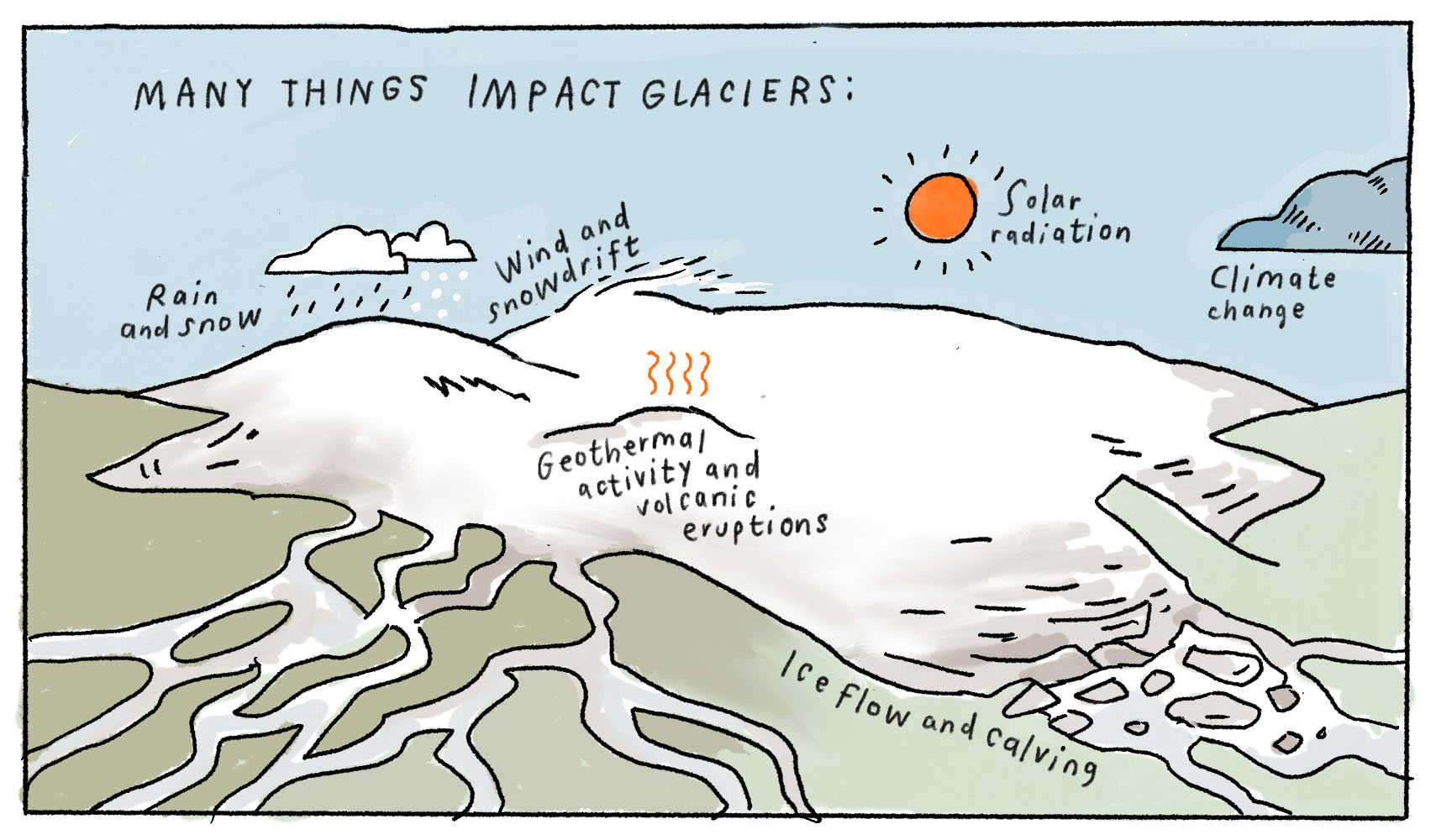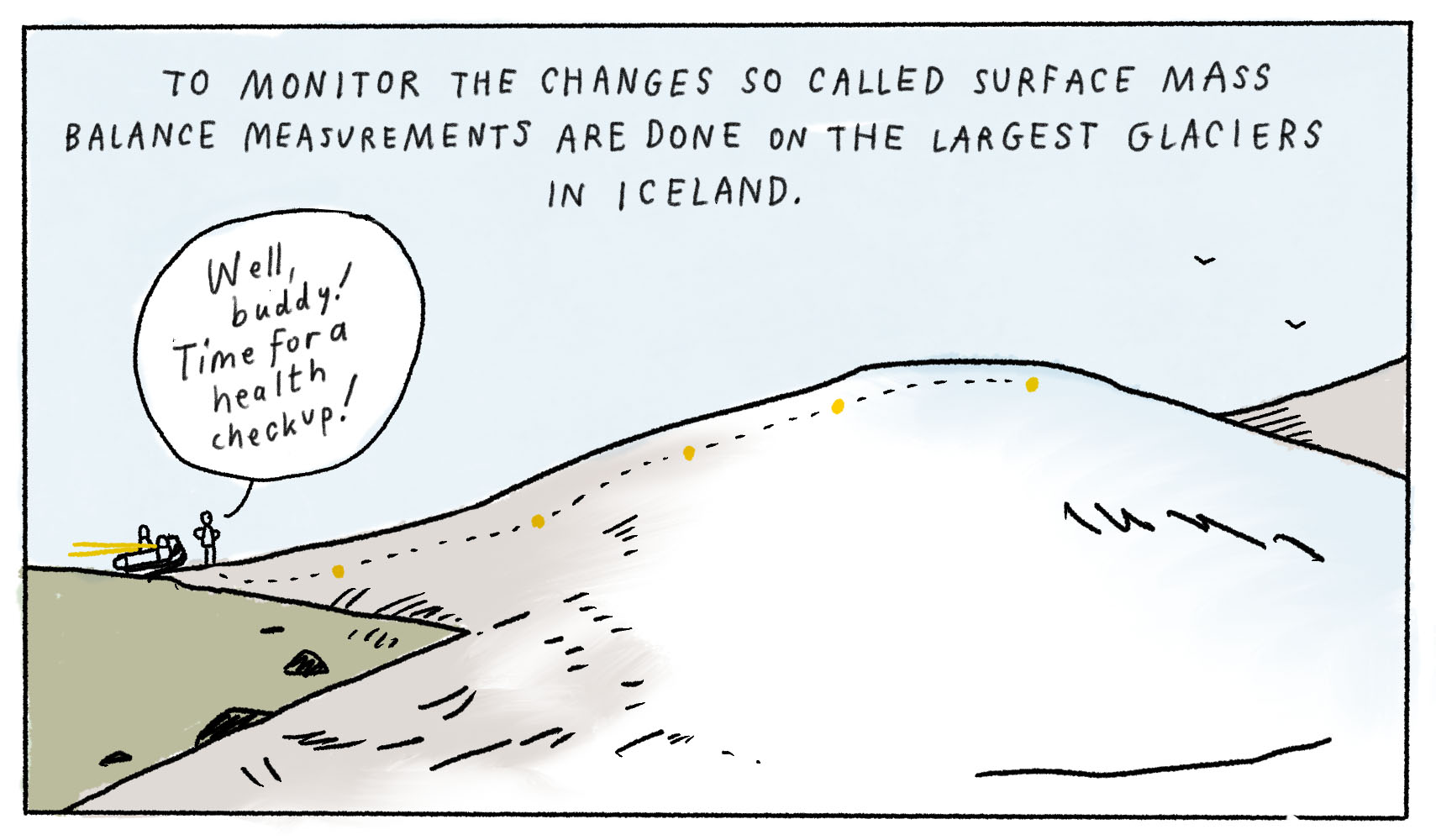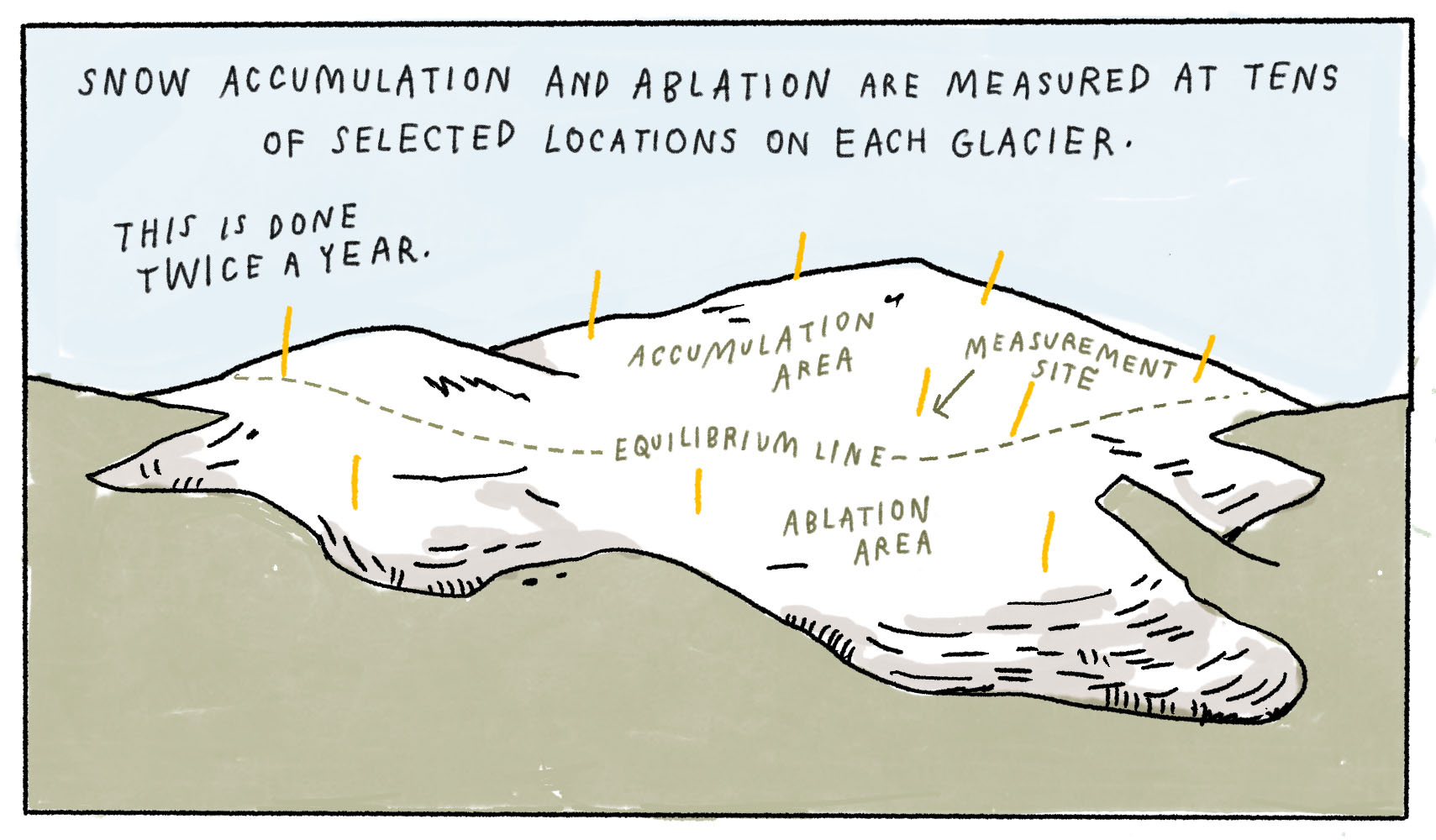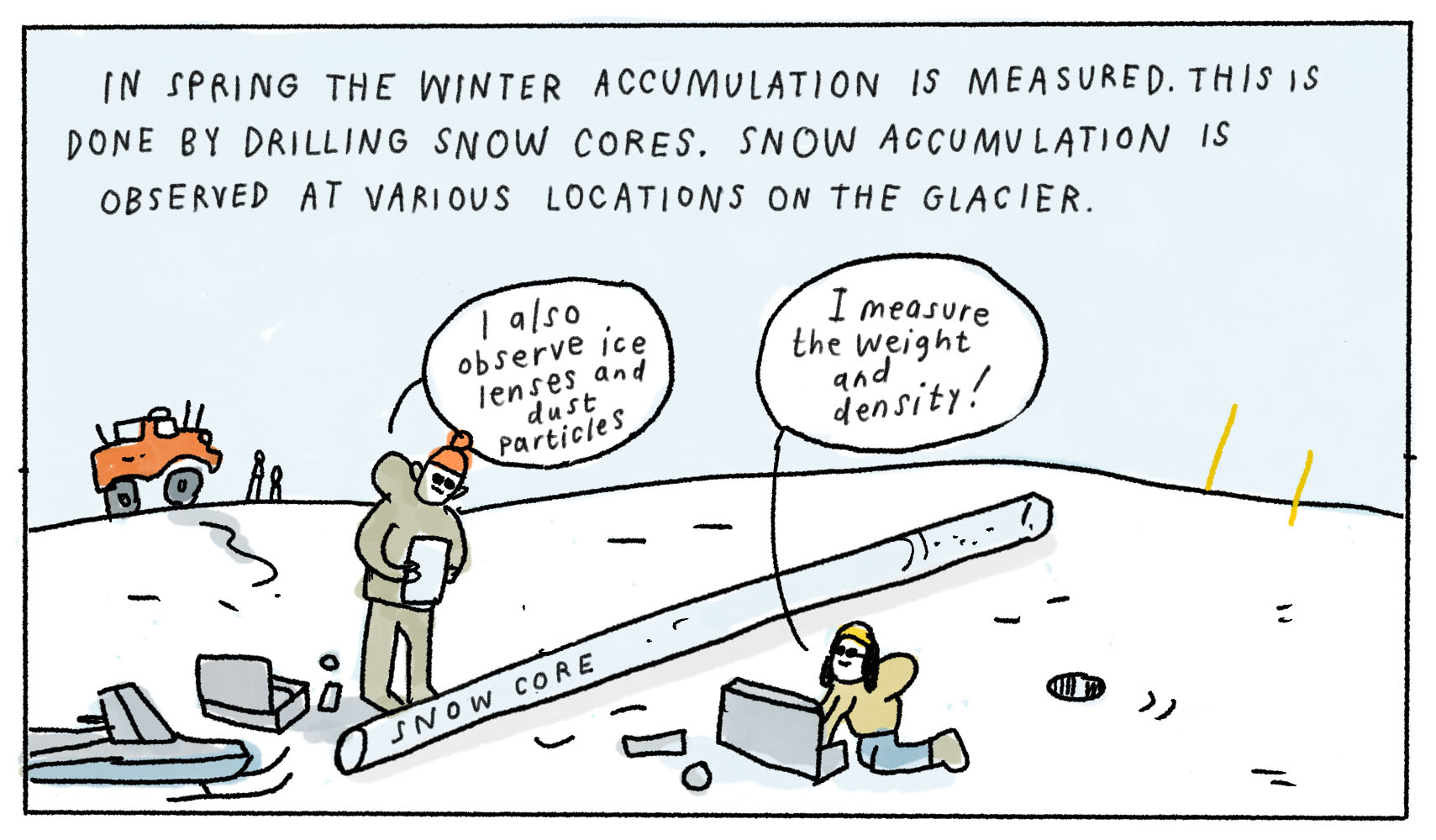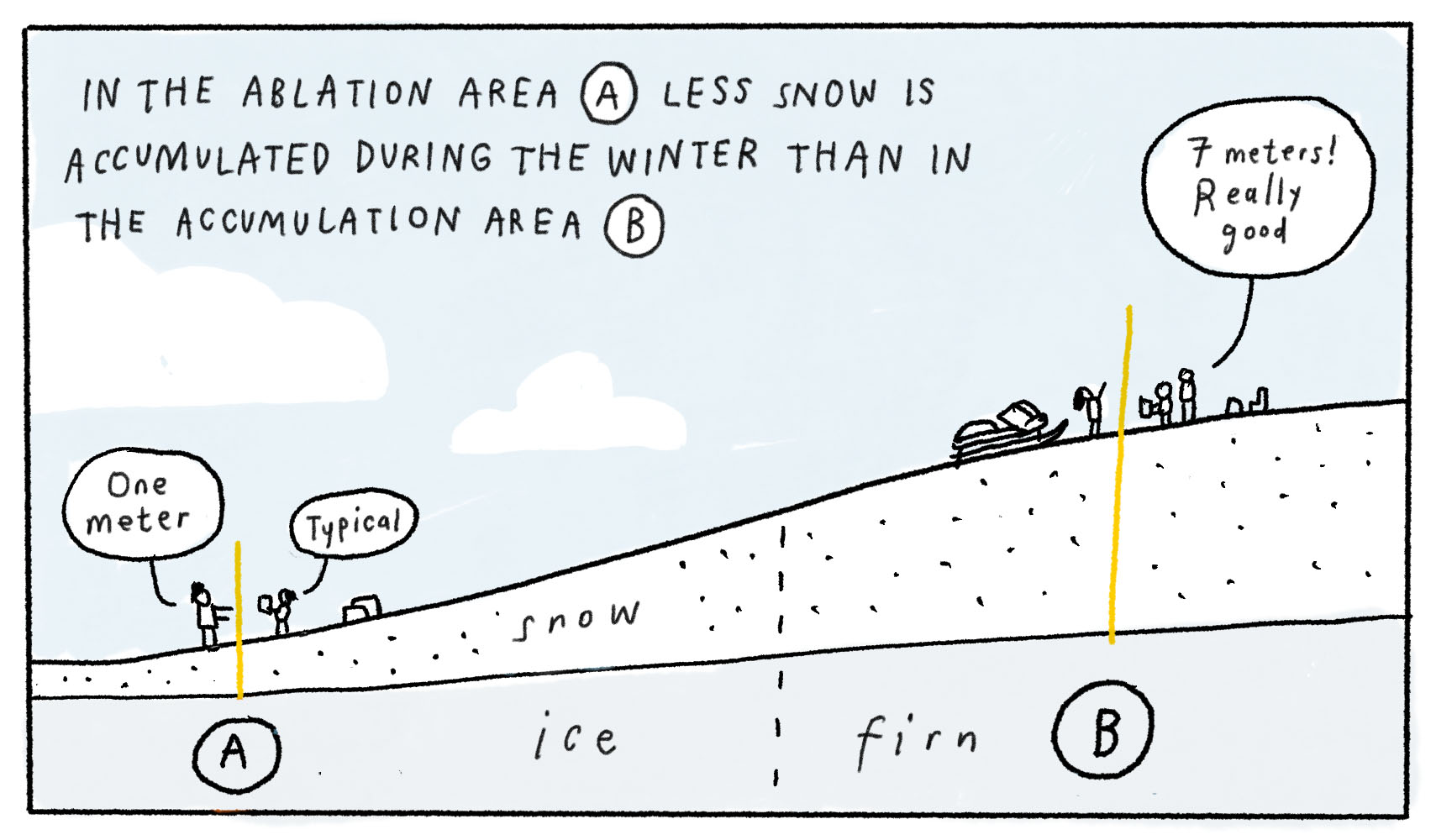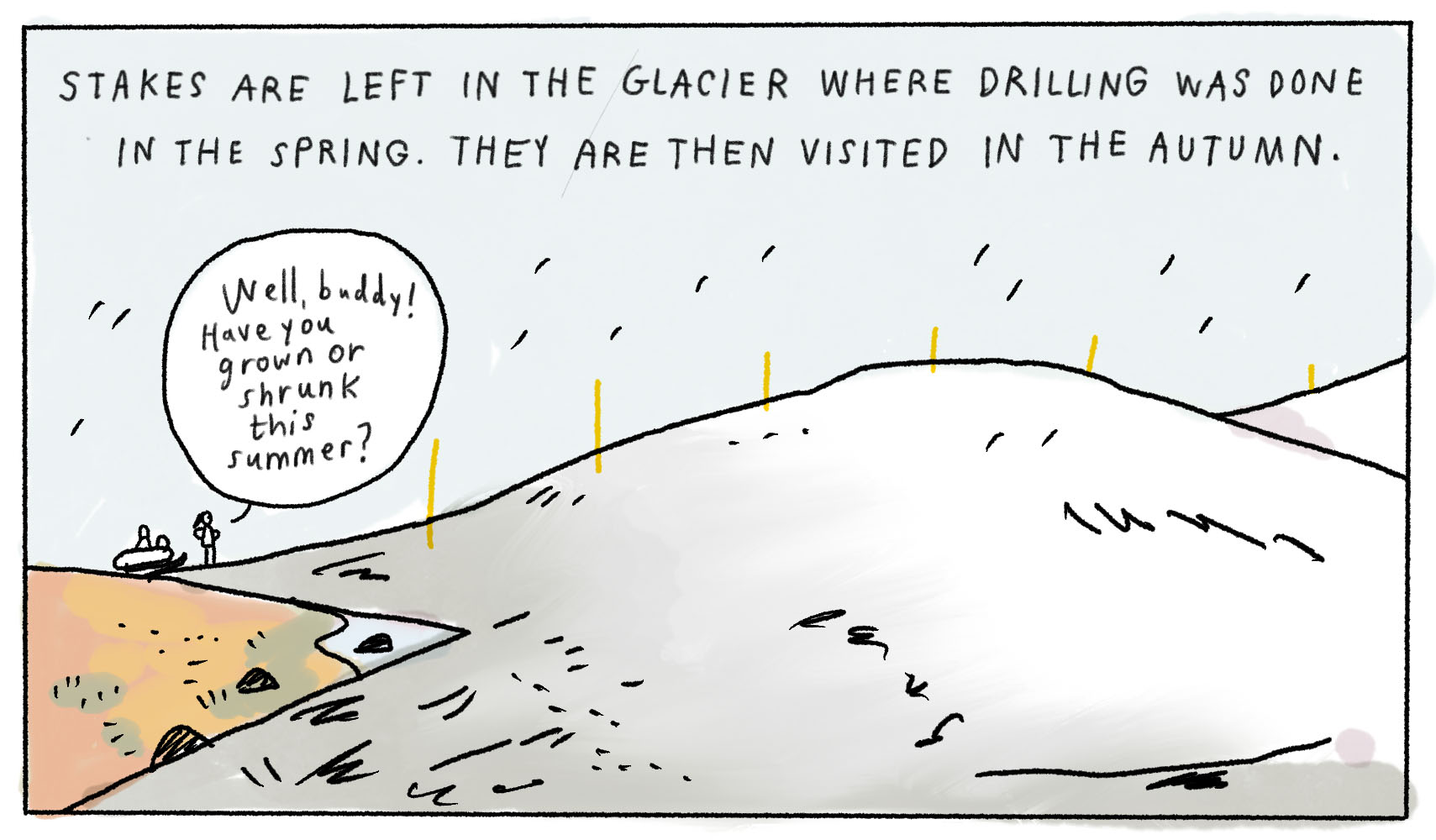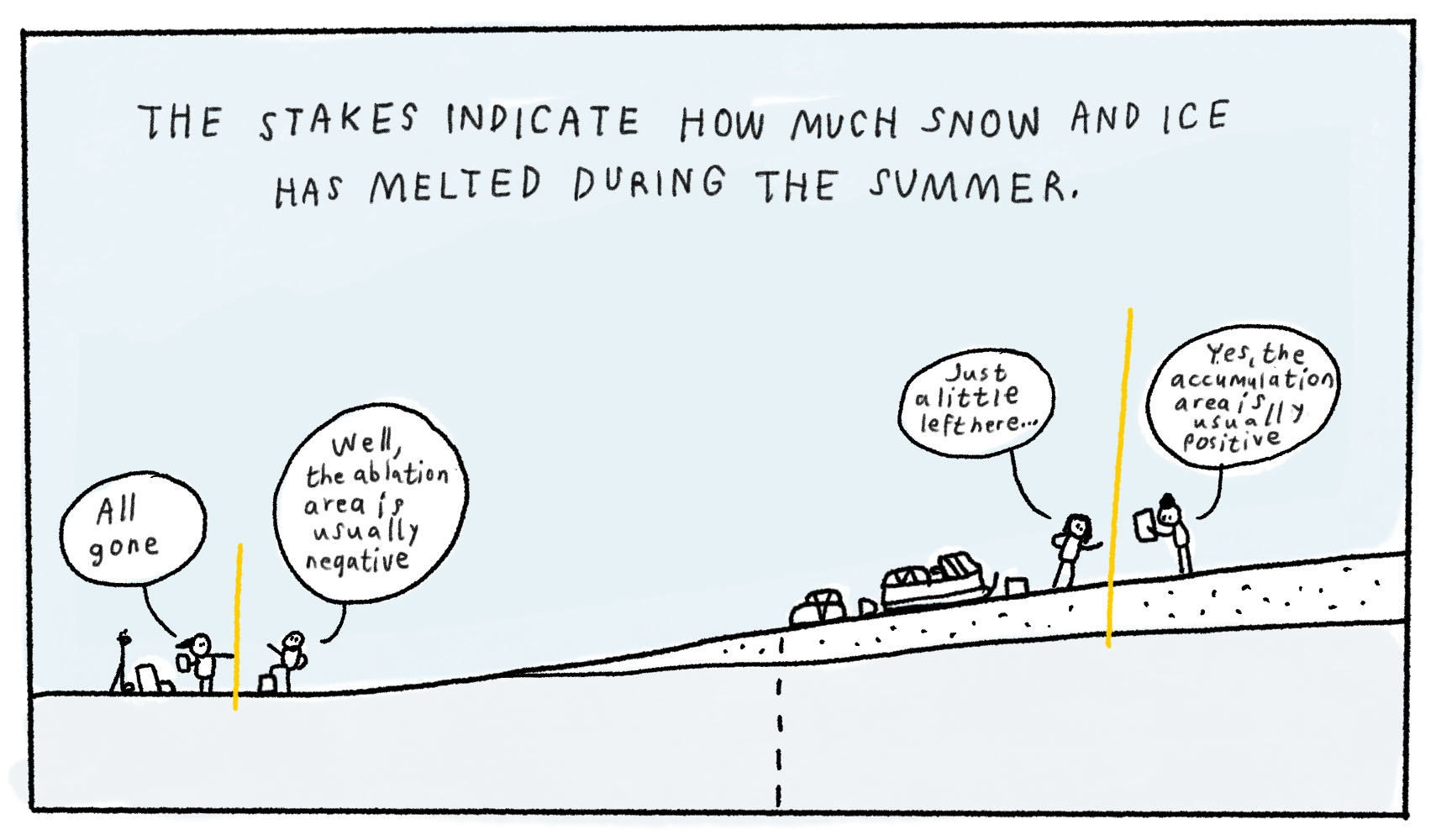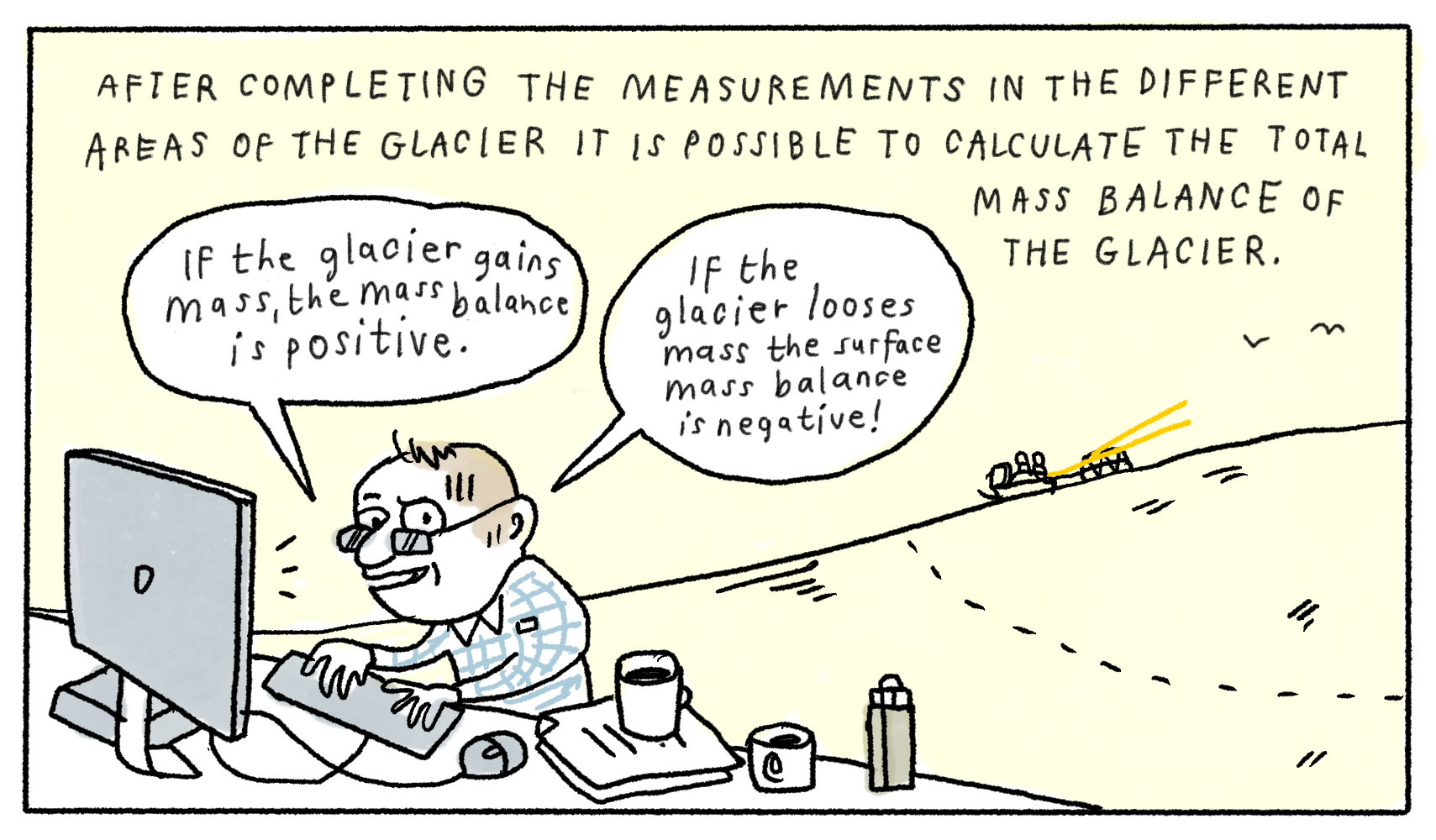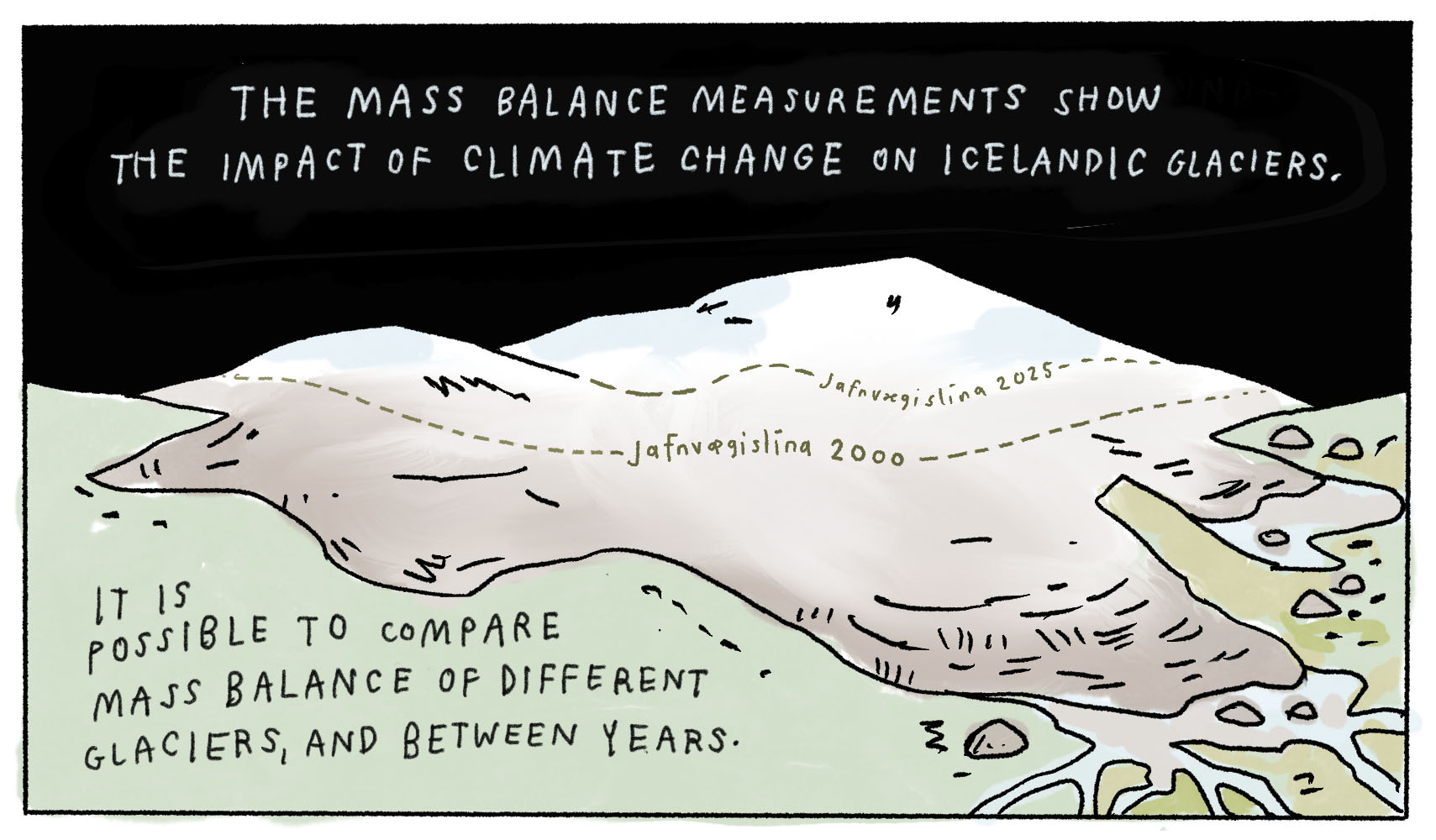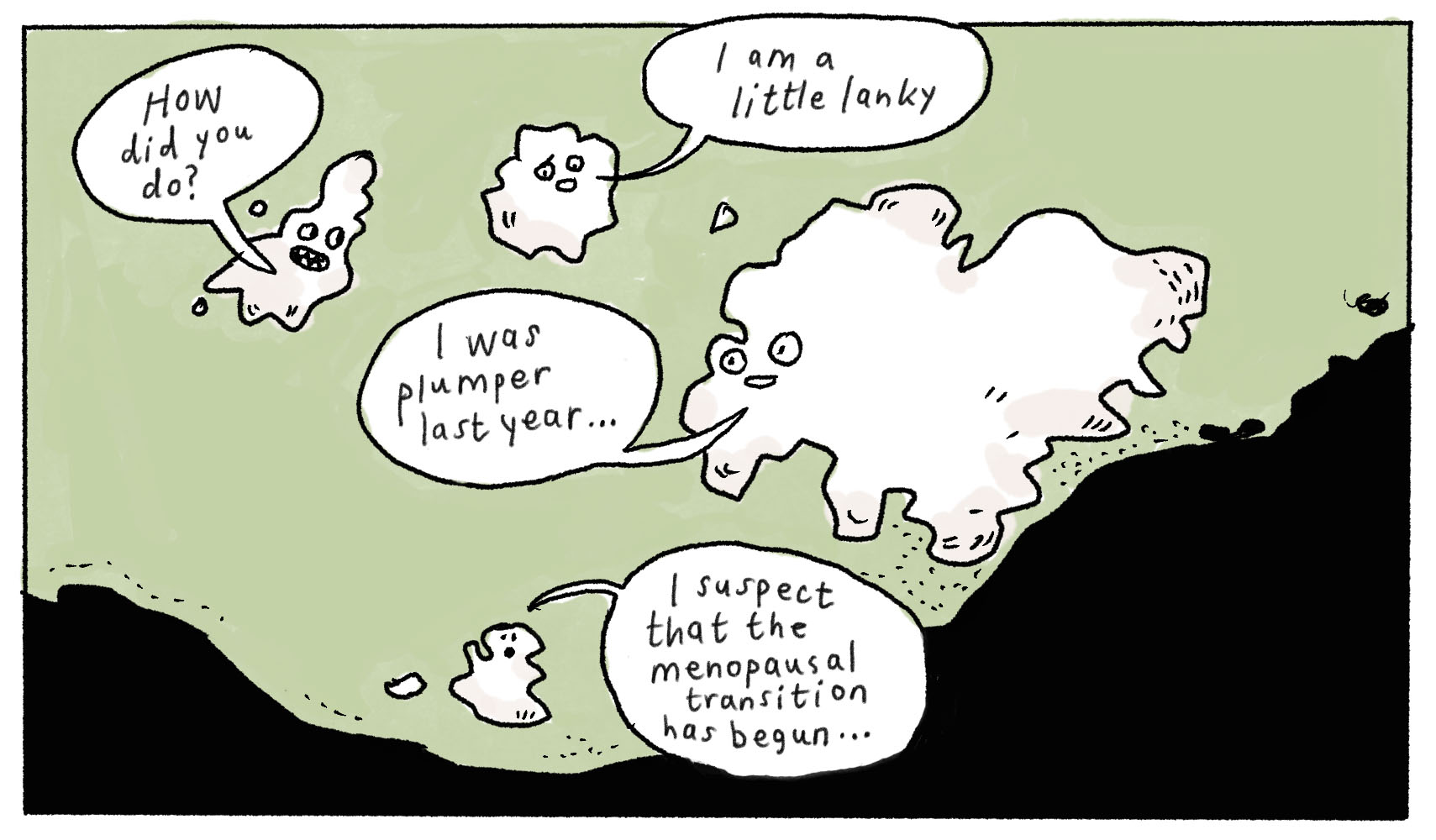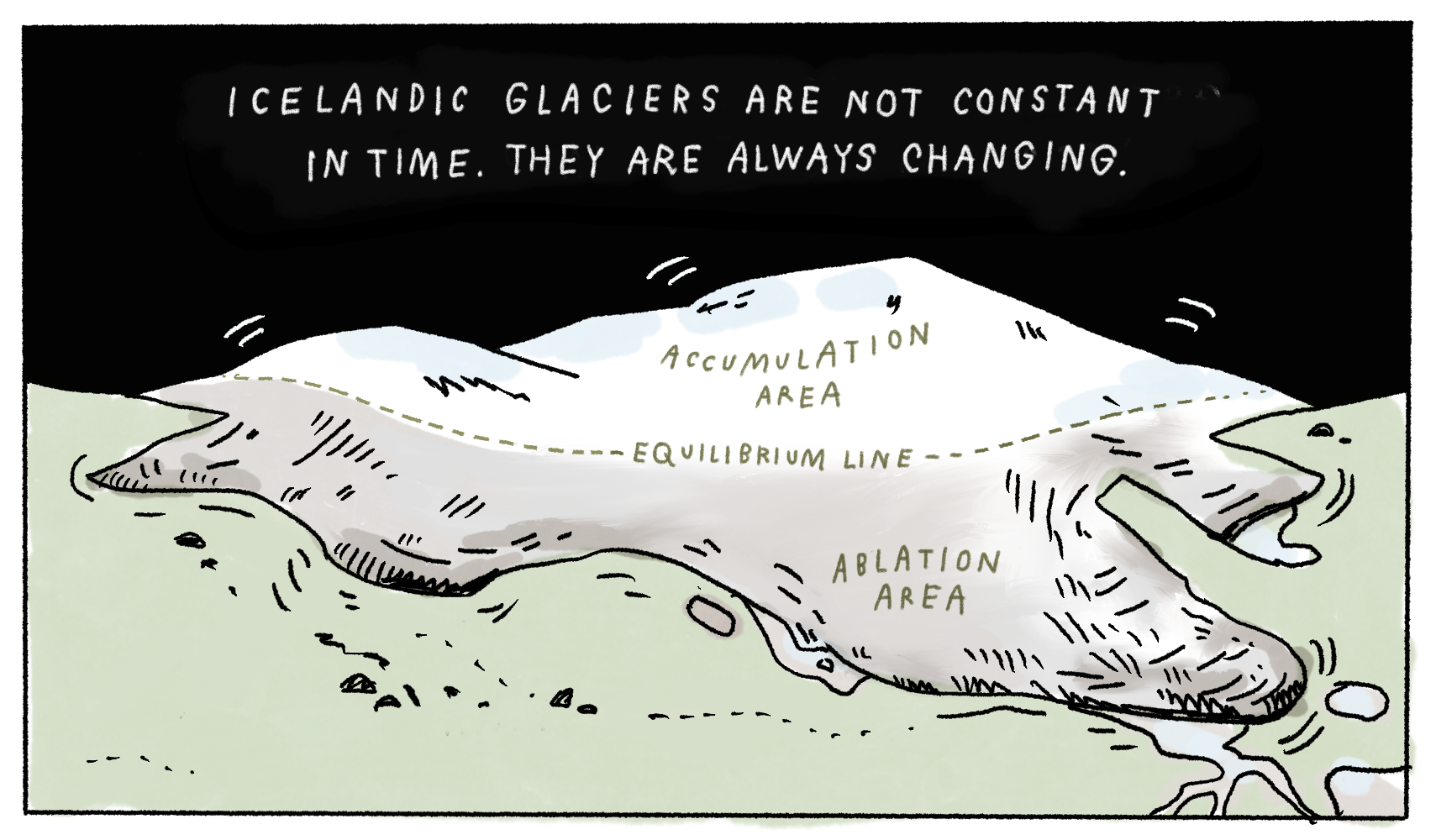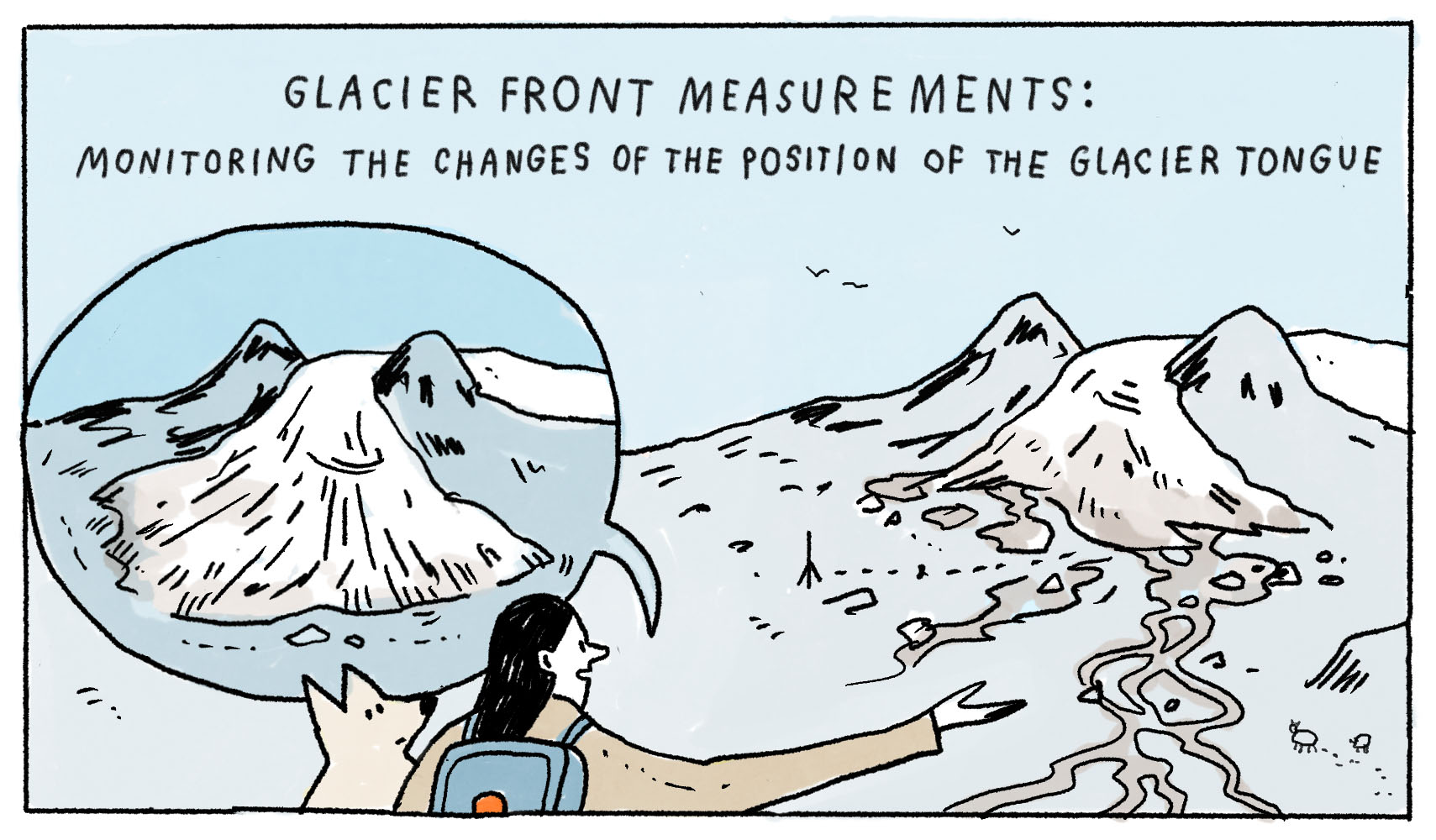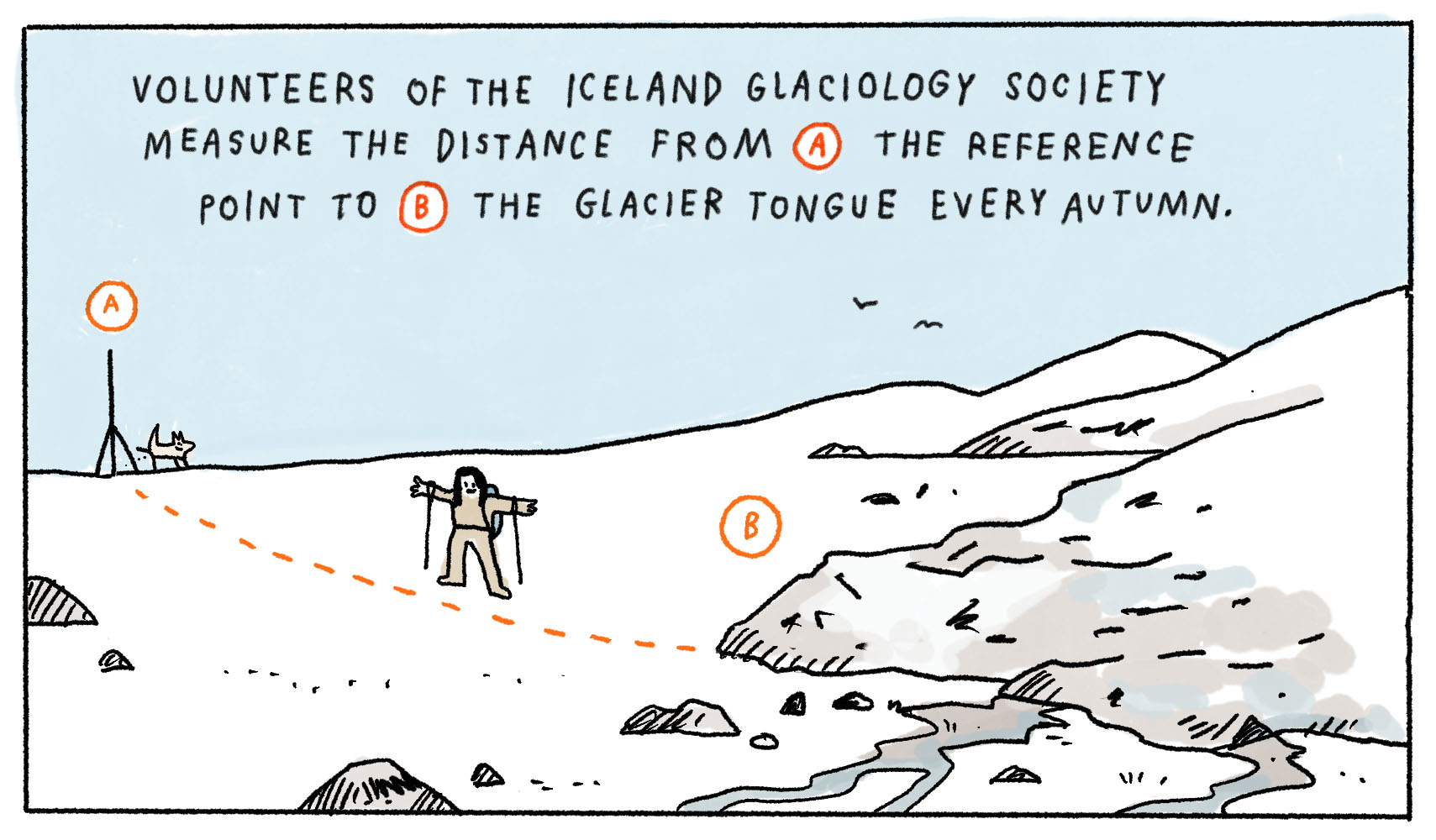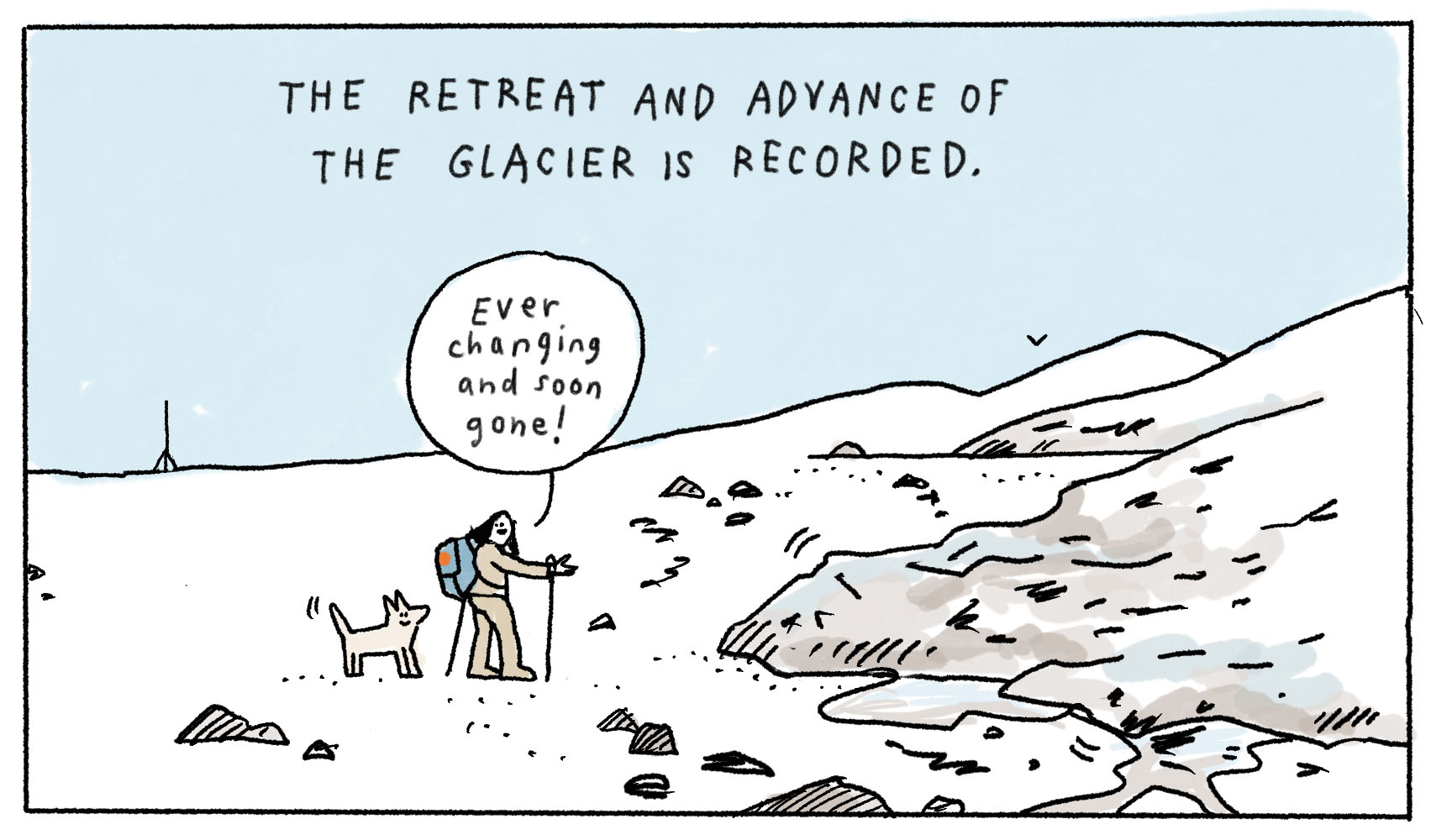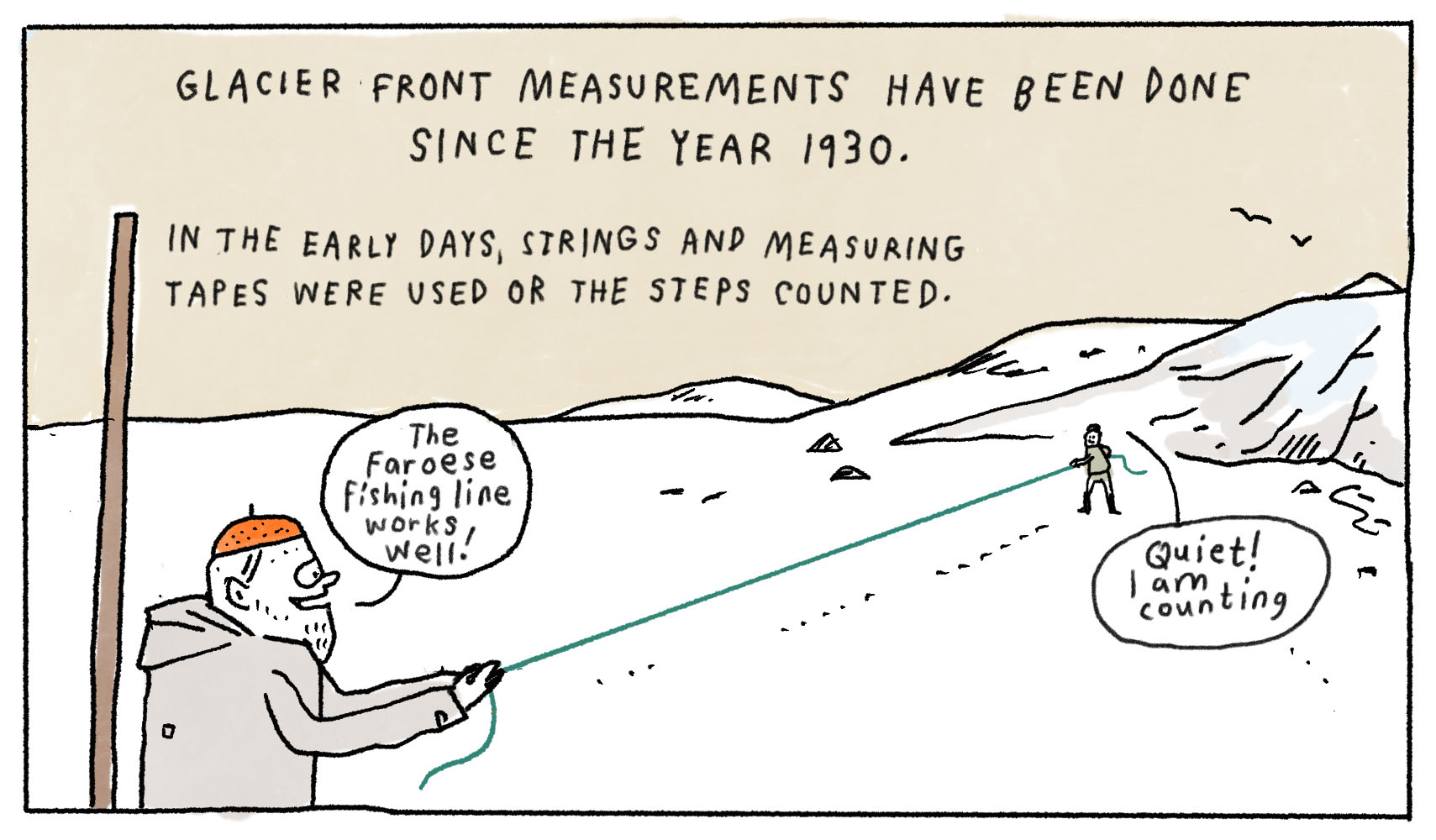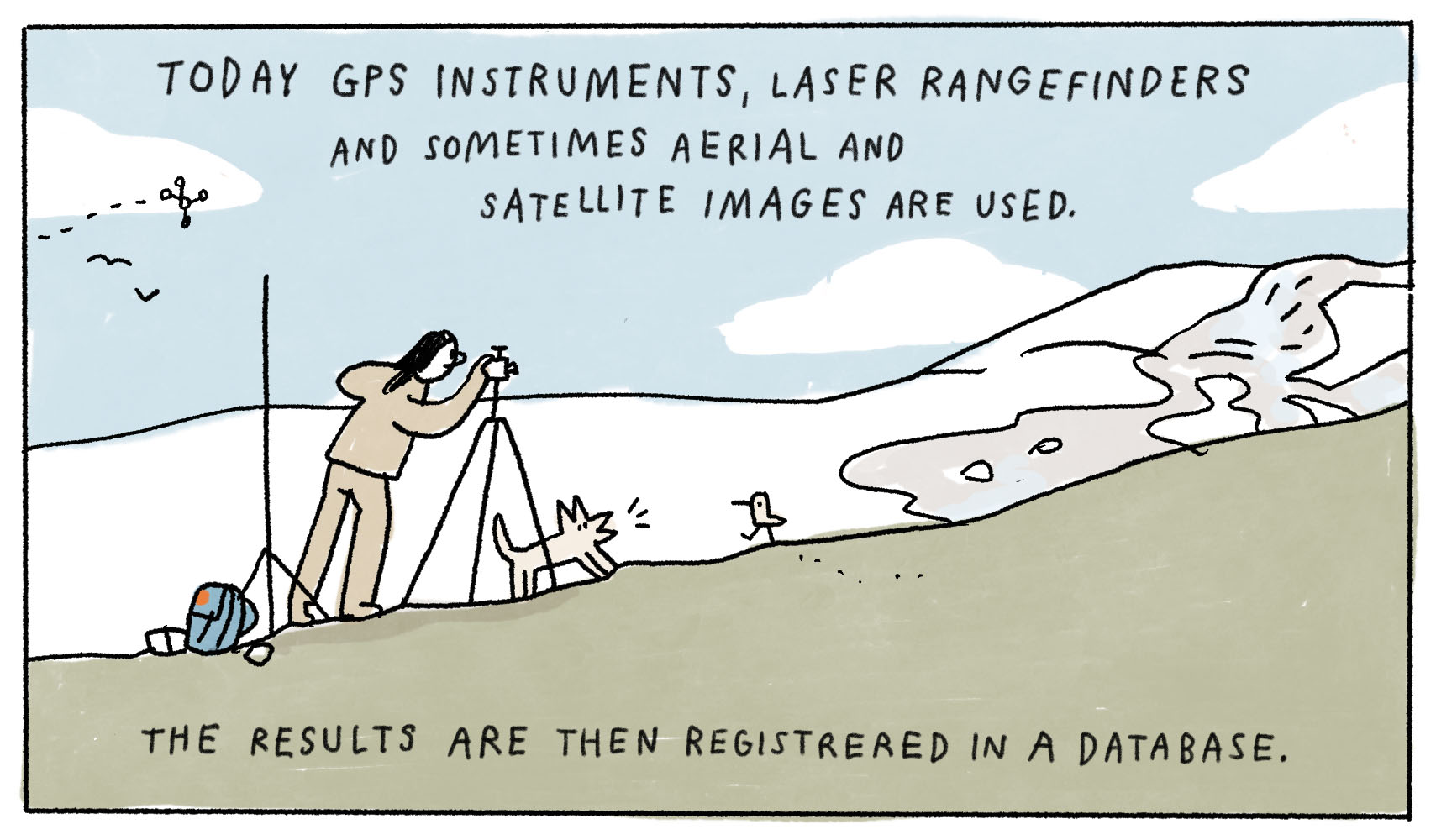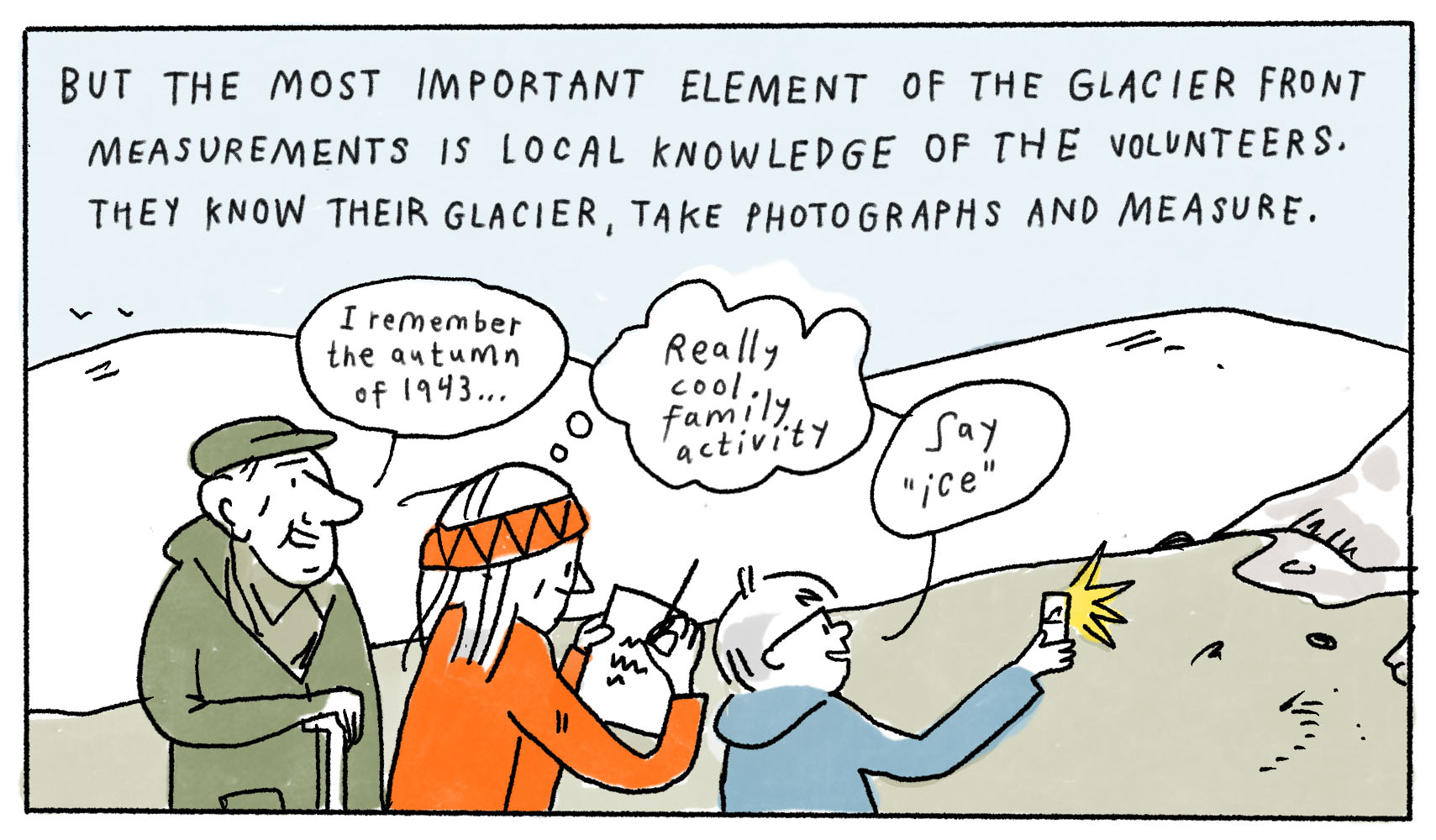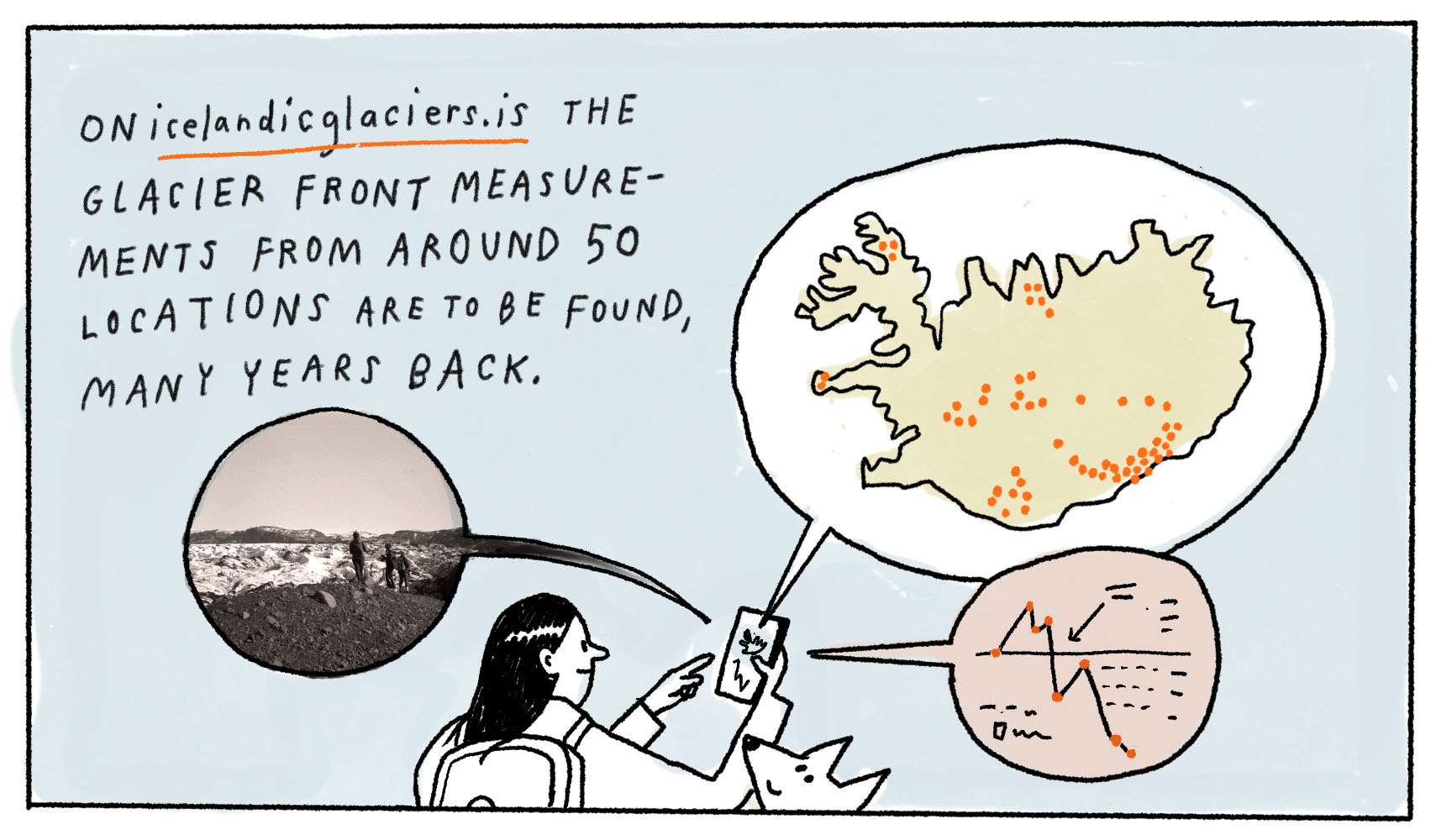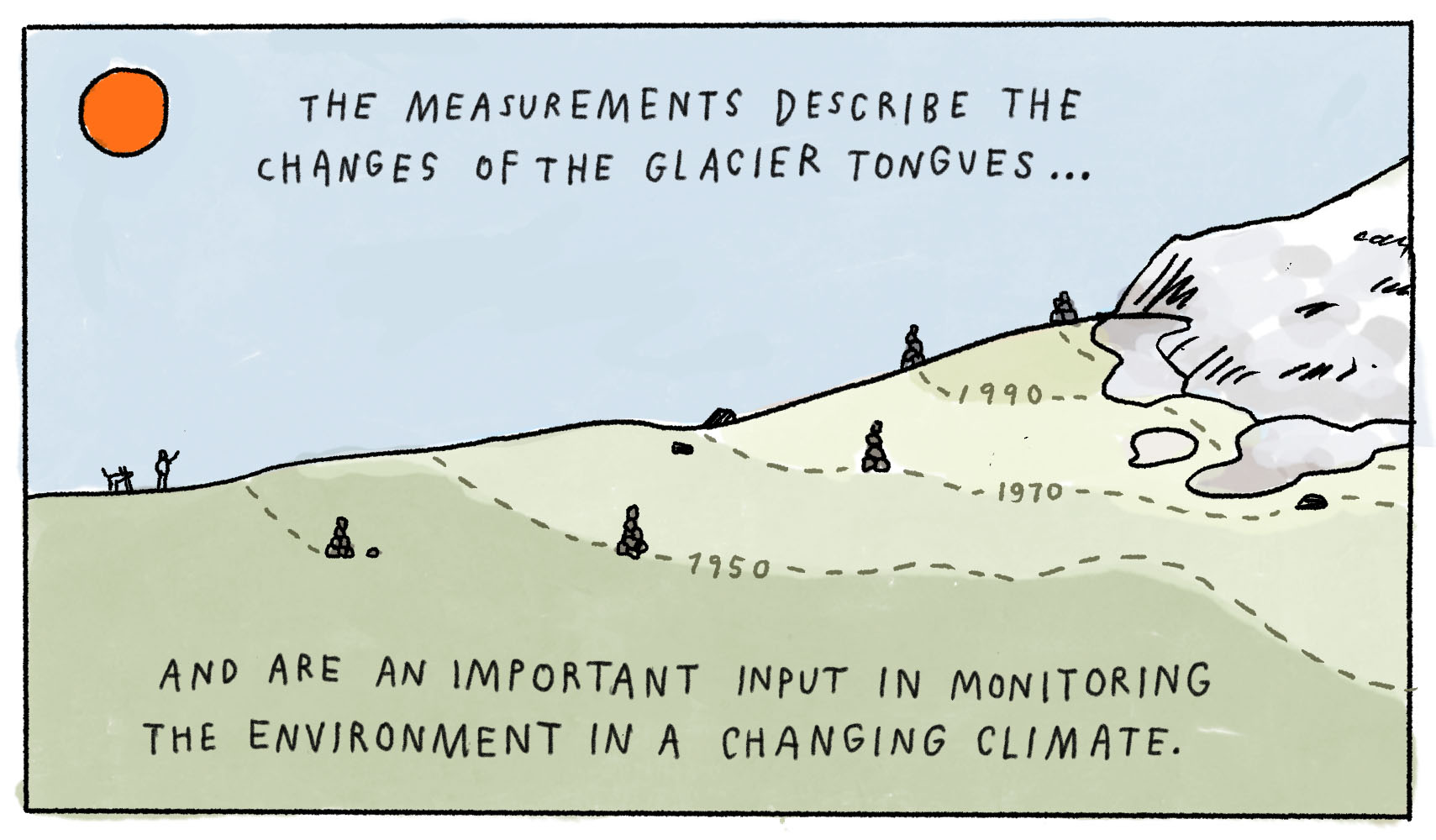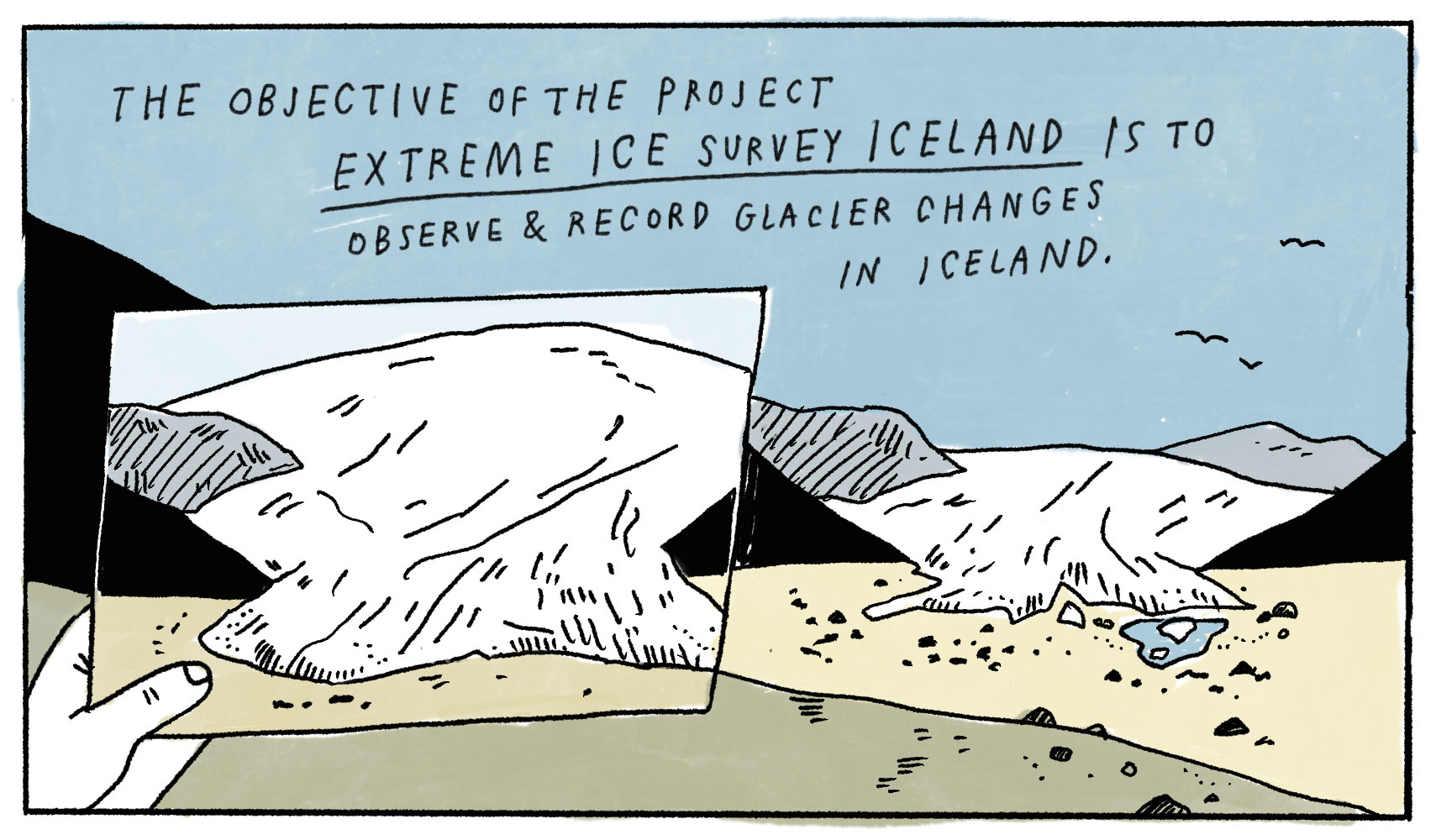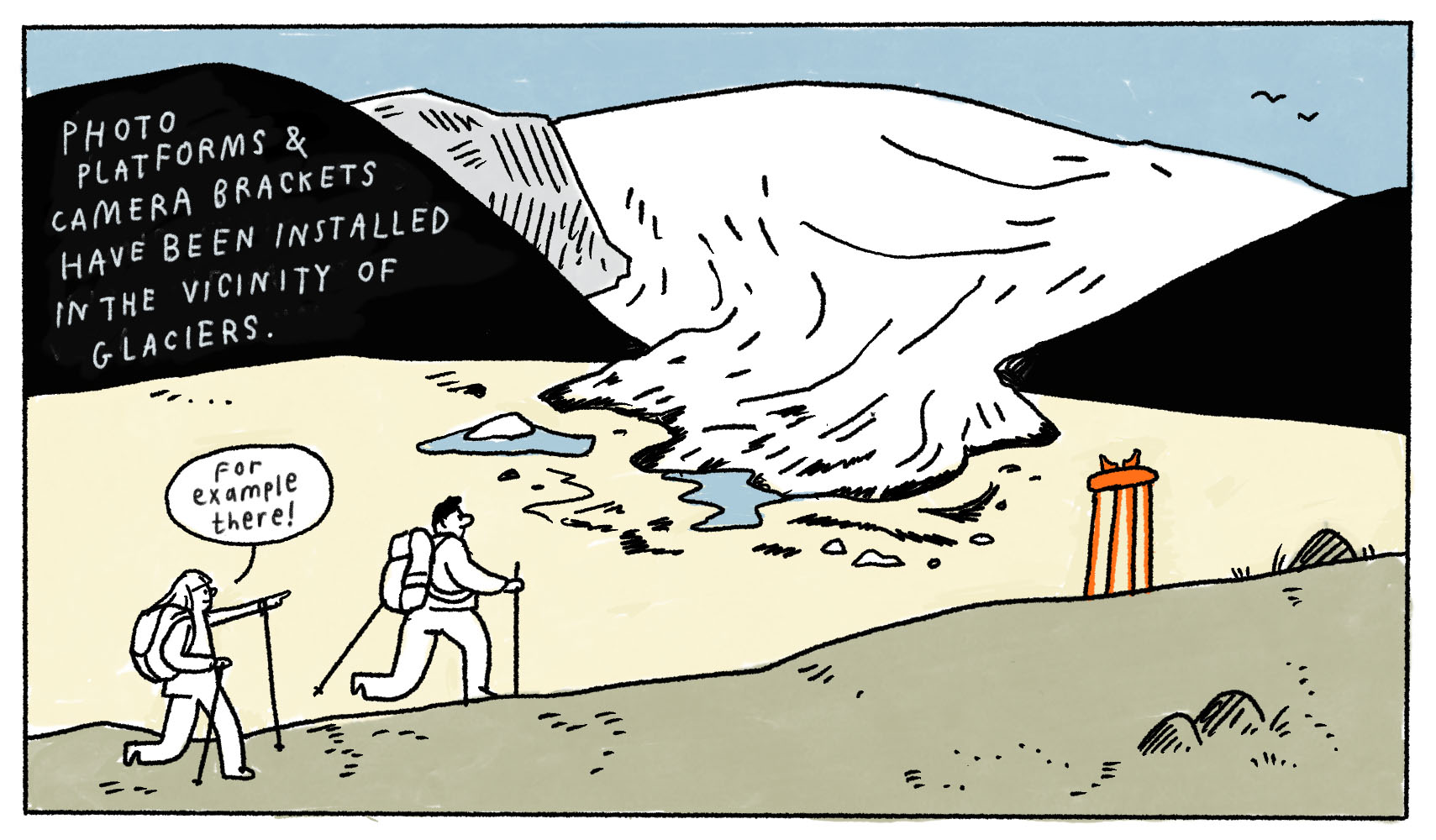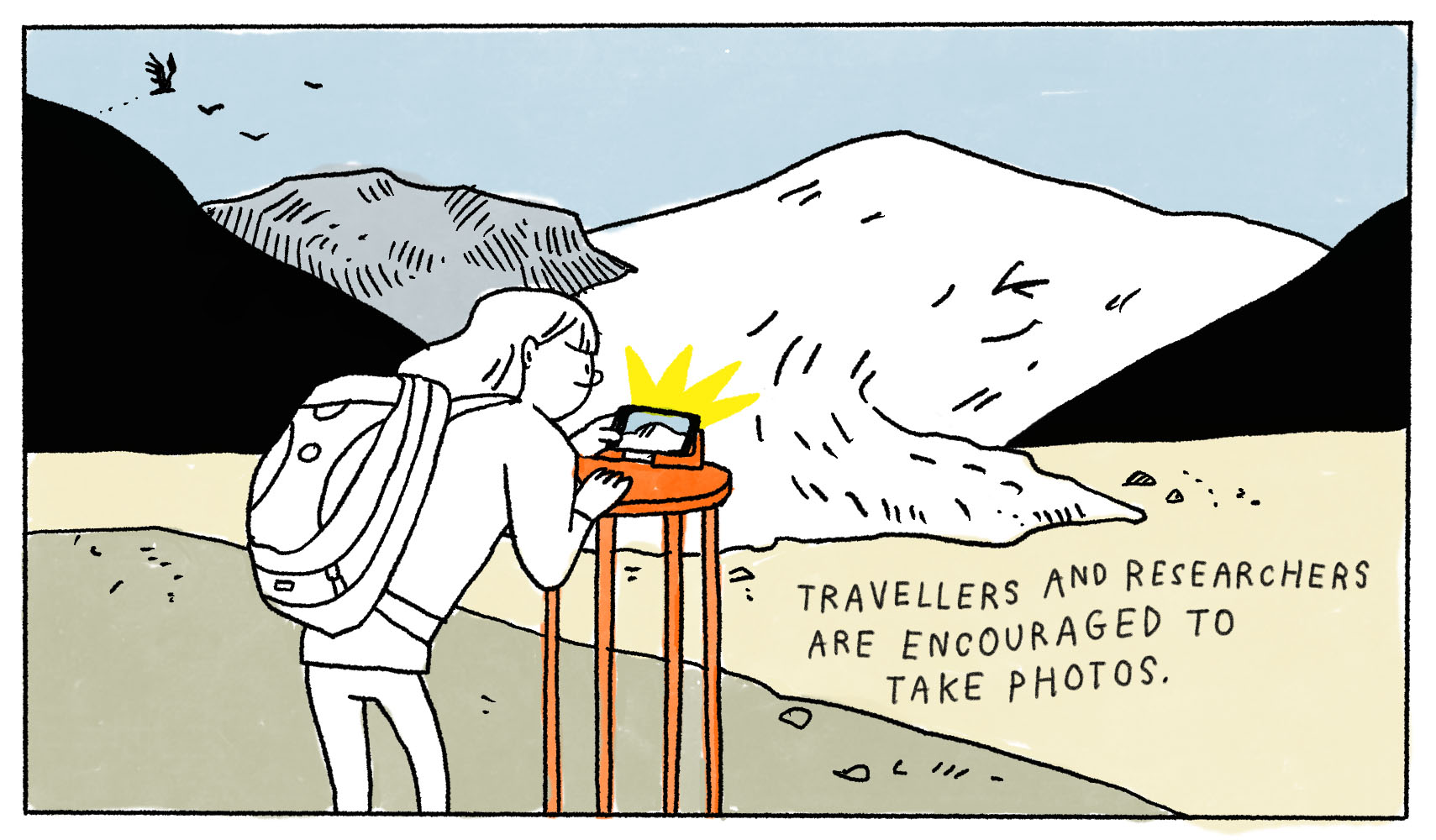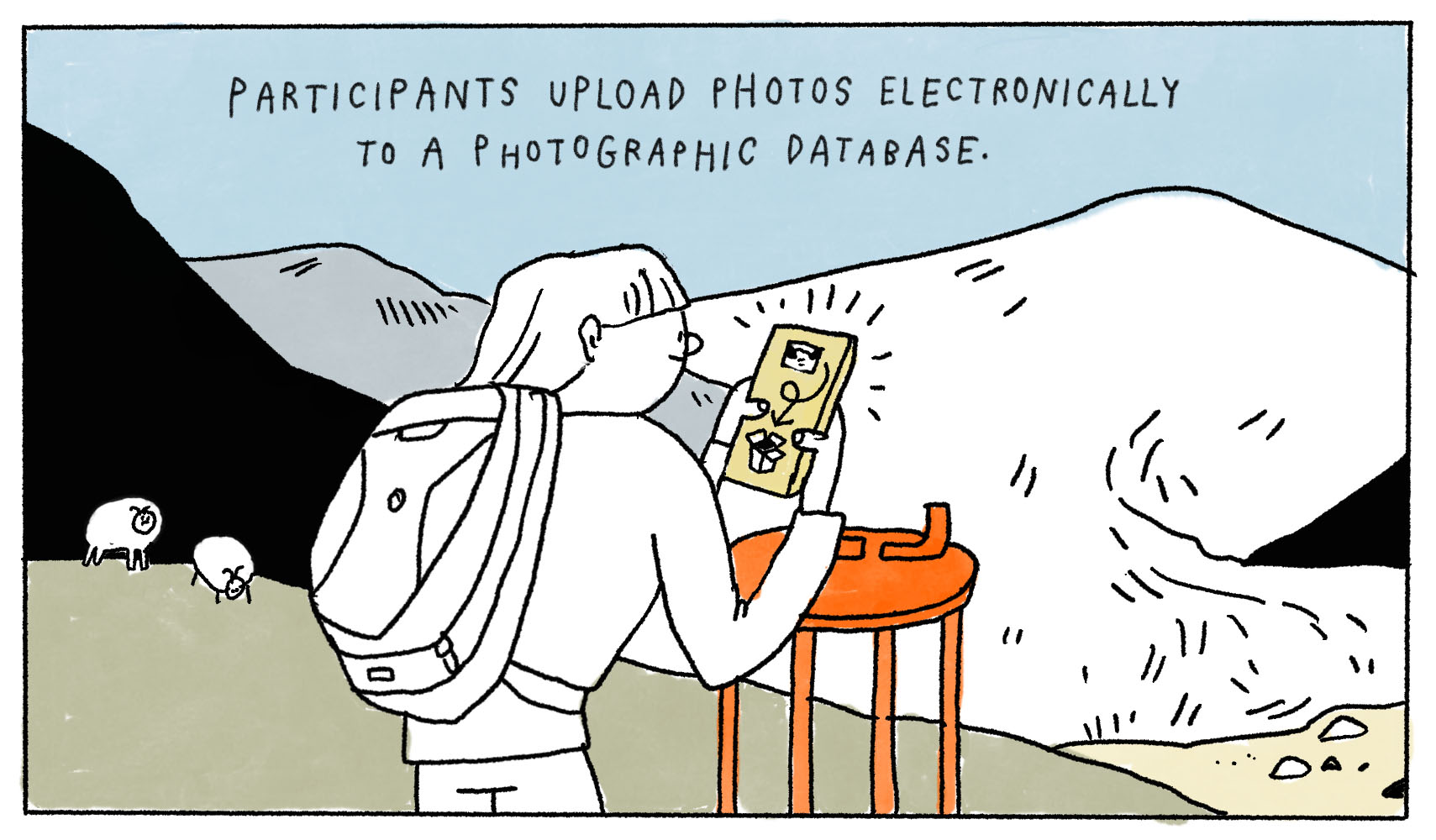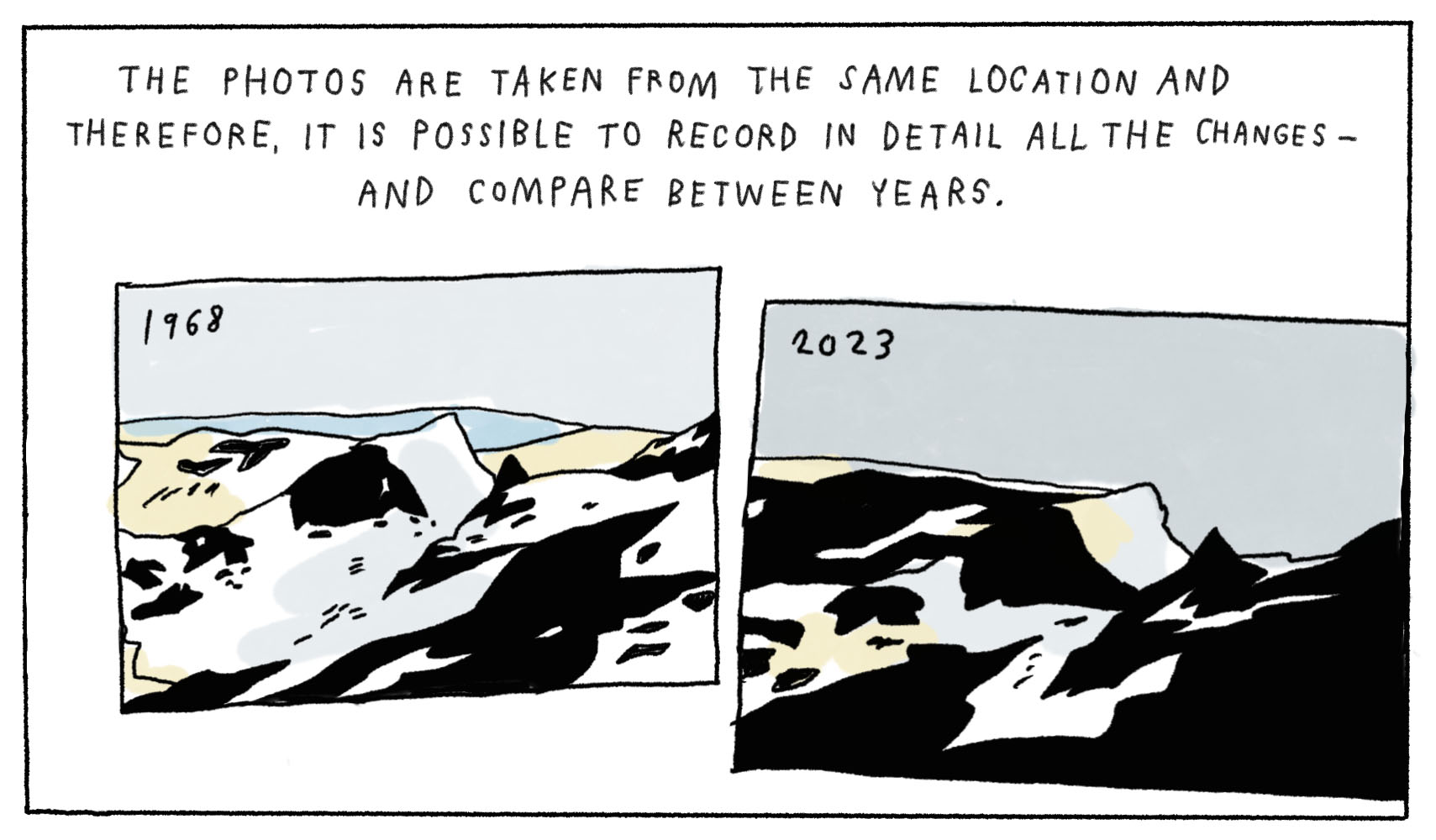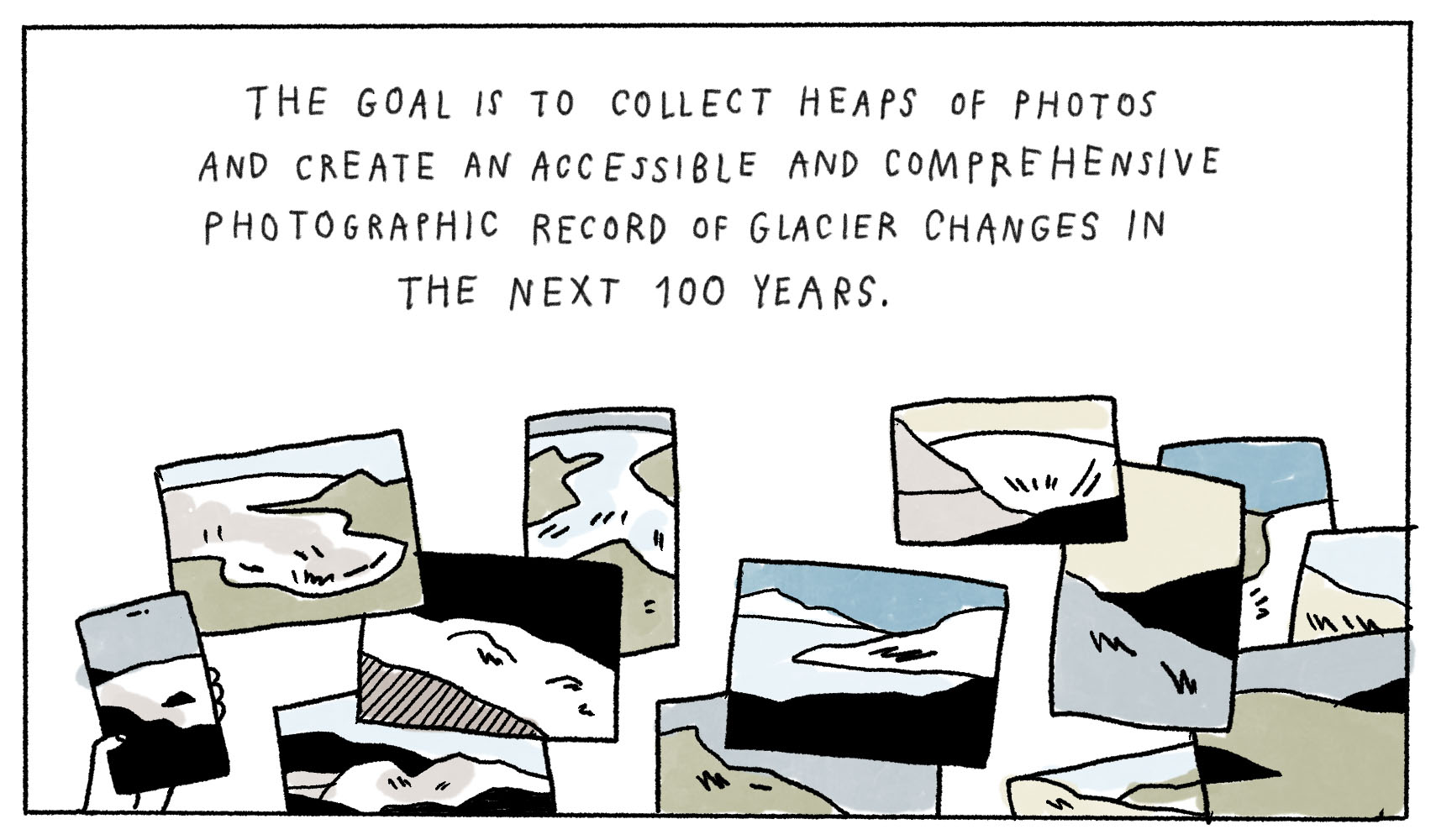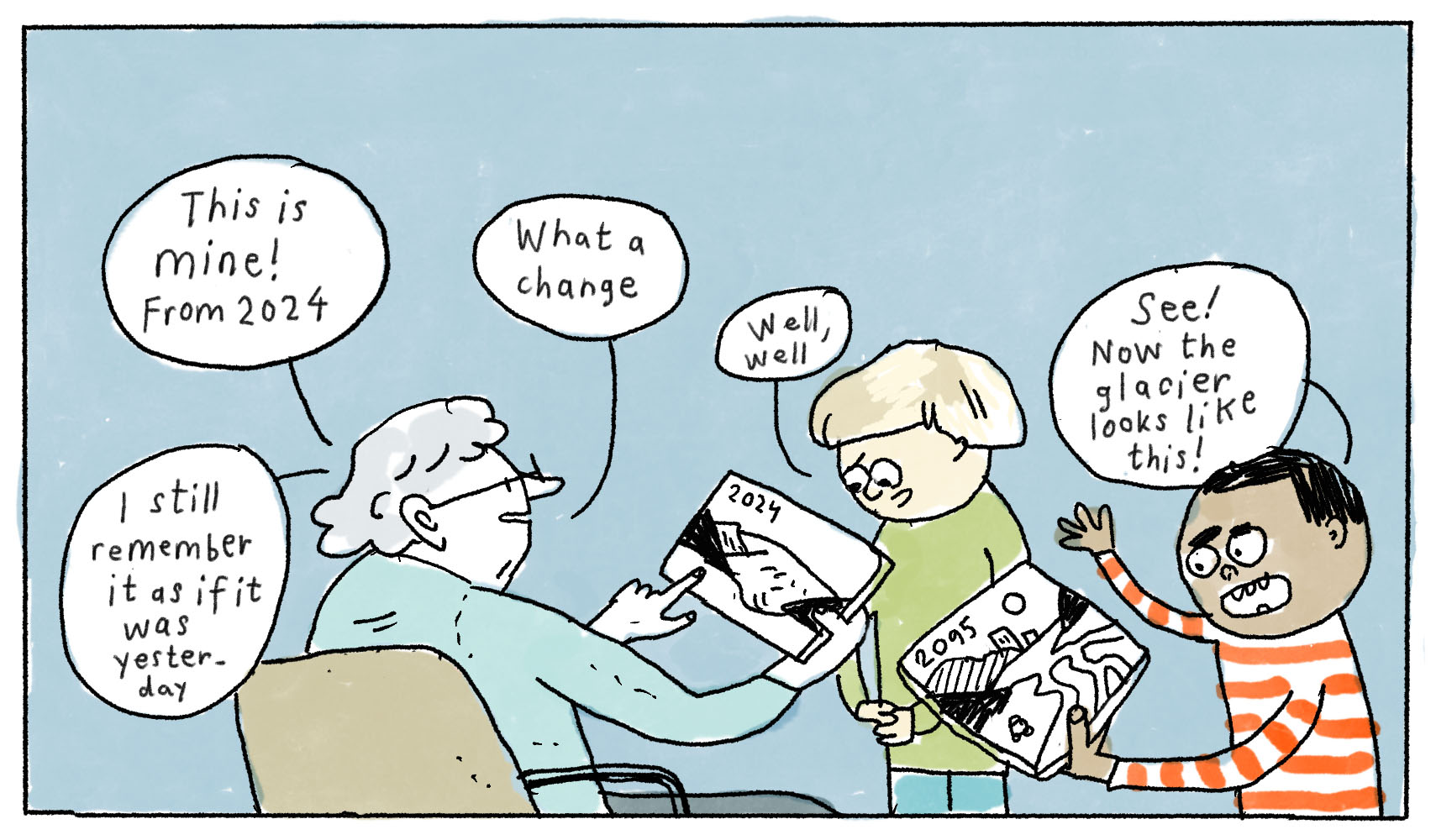Glacier Comics
Rán Flygenring teamed up with the Iceland Glaciological Society to write/draw some of the projects of the society in honour of the International Year of Glacier Preservation (https://www.un-glaciers.org/en). Here is a recording of Rán giving a talk on the first international day of glaciers on March 21st 2025: https://vimeo.com/1067307054
Mass balance measurements
Annual mass balance is the mass change from the autumn to the following autumn. The mass change is calculated as the difference between winter mass accumulation and the summer mass loss. The accumulation of snow is measured in the spring by drilling cores through the winter snowpack and the ablation of snow and ice by measuring changes in the height of stakes or the length of wires left in boreholes drilled into the glacier ice. The mass balance of the 3 largest ice caps is measured during spring and autumn excursions, requiring snow scouters and snow cats and trained people to carry out the measurements in a safe manner. The survey points are strategically located away from crevasse areas and cover an altitudinal range to represent the total mass balance of the ice cap.
Frontal variations
In 1930, Jón Eyþórsson pioneered a programme to monitor the annual variations of glacier termini in Iceland, with the participation of local people all around the country. Each autumn the distance to the glacier margin is measured from a benchmark typically marked by a cairn or iron post. These observations have been continued by volunteers of the society since its foundation in 1950 and several people have carried out continuous measurements for decades. These measurements are the first continuous and systematic oberservations of glacier changes in Iceland. The measurements are published in Jökull and on the glacier webportal.
Extreme Ice Survey Iceland (EISI)
The Iceland Glaciological Society and photographer James Balog are collaborating on documenting glacier changes through the camera lens within the project Extreme Ice Survey Iceland. Sites have been selected for various photo platforms for citizens and scientists to build the photographic record for centuries to come. The goal is to document the glacier changes and communicate the photographic record by providing an accessible photo archive, organized as a chronological and geographic continuum.

